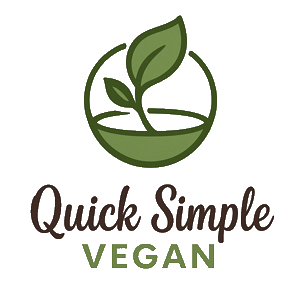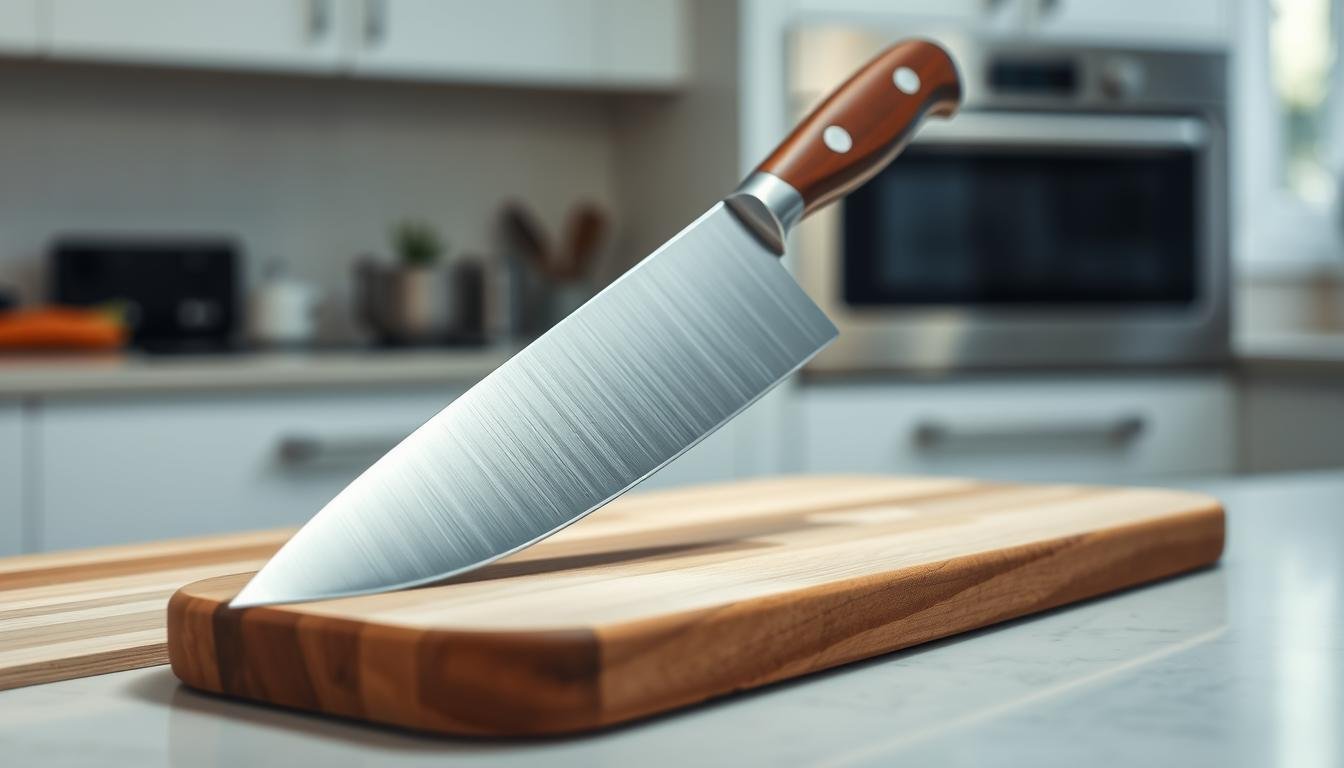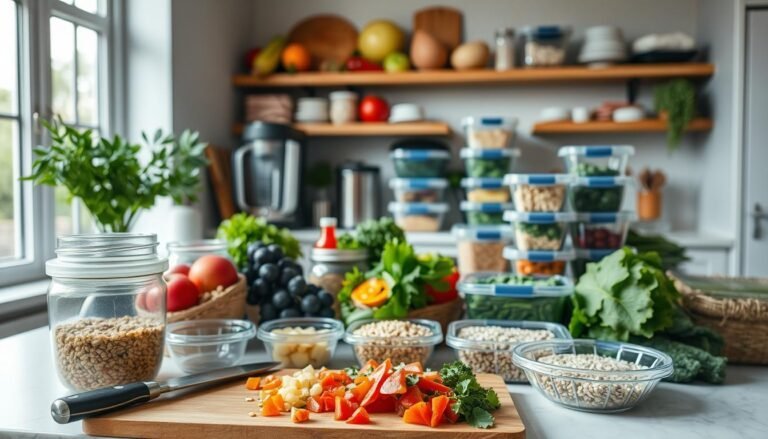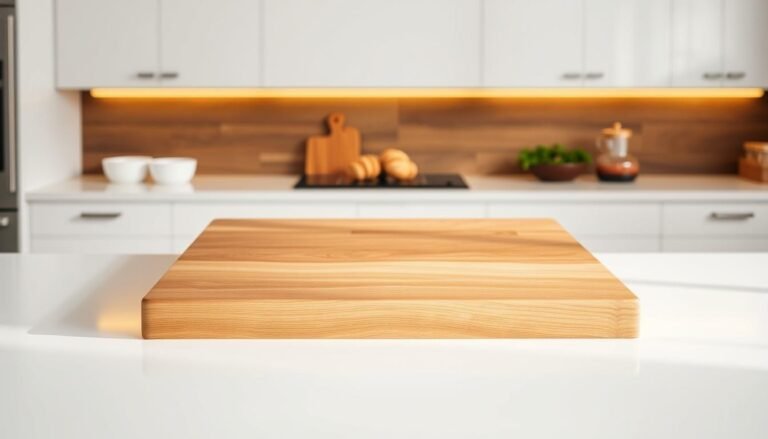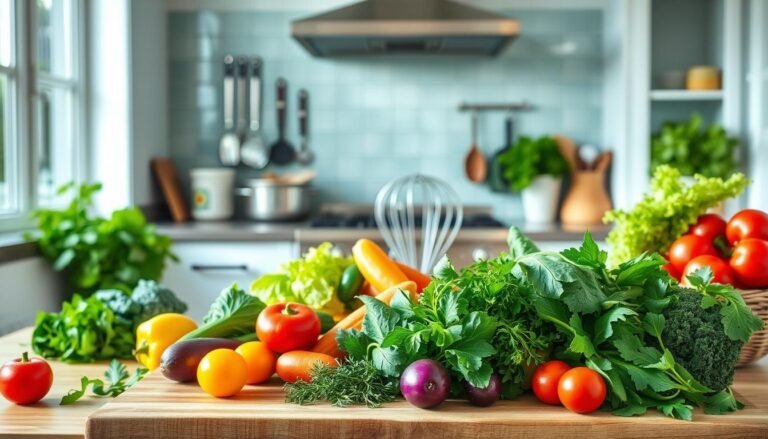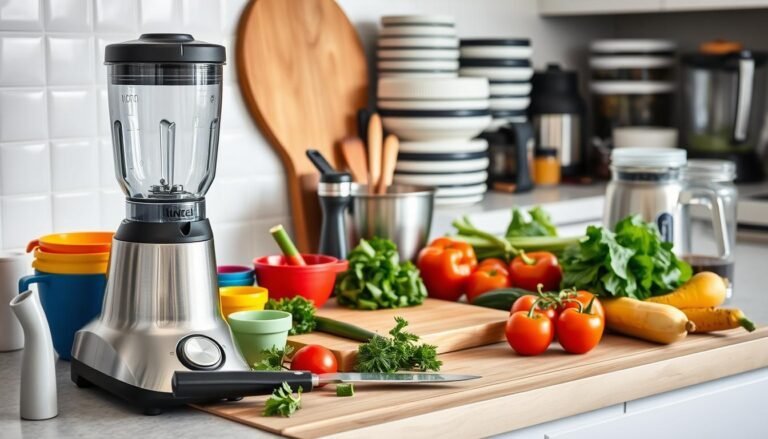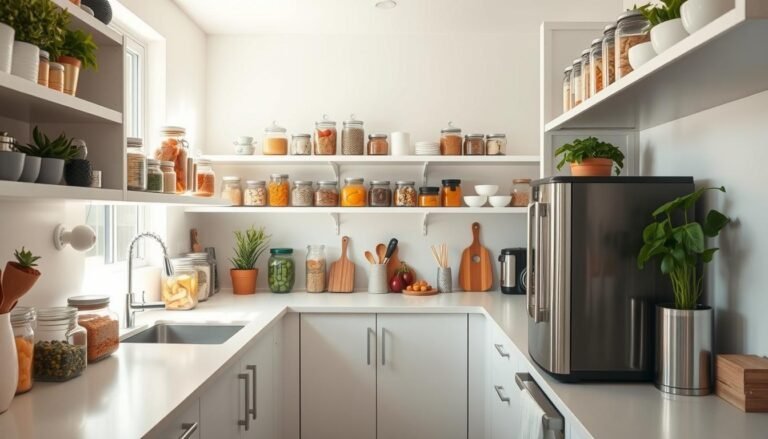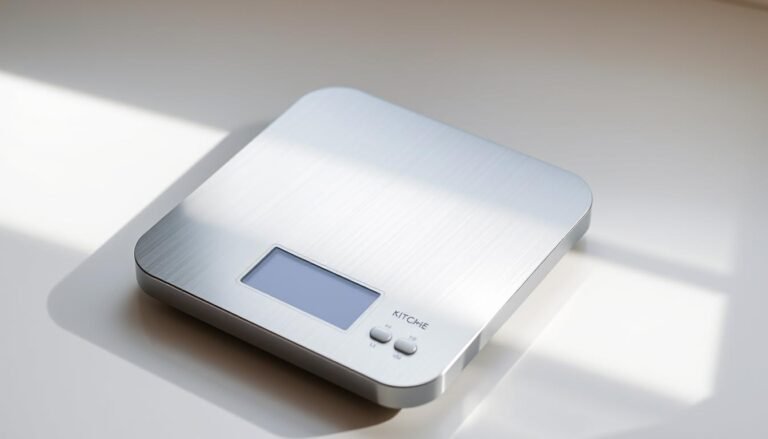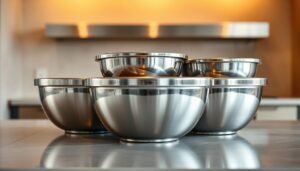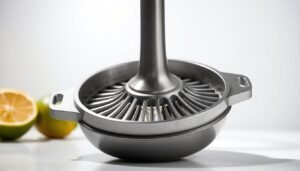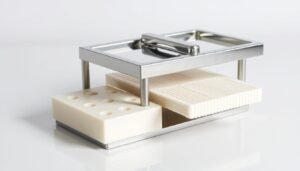Disclosure: This Post Contains Affiliate Links; We earn a commission on purchases.
A high-quality chef knife is more than just a tool. It’s the heart of every kitchen. It helps cooks make meals quickly and well.
Having a sharp chef knife changes cooking for the better. It makes prep work faster and more fun. It’s key for tasks like chopping veggies or slicing meat.
A reliable Chef’s Knife is a must in any kitchen. It gives cooks the precision and control they need for many tasks.
Key Takeaways
- A high-quality chef’s knife is essential for efficient meal preparation.
- A sharp knife enhances the cooking experience and improves safety.
- Investing in a reliable chef’s knife is key for any kitchen.
- A good chef’s knife offers precision and control for many cooking tasks.
- Proper knife care is needed to keep it sharp and last long.
The Cornerstone of Culinary Success
A top-notch chef’s knife is key to cooking success. It’s a must-have for every kitchen. A good knife makes cooking faster and safer.
The Impact of Quality Tools on Cooking Efficiency
A sharp, balanced professional chef knife makes cutting easier. This saves time in the kitchen. It’s great for both pros and home cooks.
Safety Benefits of a Properly Maintained Knife
Sharp knives are safer than dull ones. They need less force to cut. This lowers kitchen accident risks, as EFNEP classes show.
Keeping your knife sharp and stored right is vital. Choosing the best chef’s knives and caring for them can prevent injuries.
Looking at chef knife reviews helps pick the right knife. It also teaches how to keep it in top shape.
What Makes a Chef’s Knife Essential in Modern Kitchens
In today’s kitchens, a good chef’s knife is key for many tasks. It’s versatile, making it a must-have for both pros and home cooks.
Versatility Across Cooking Tasks
A chef’s knife is great for many kitchen jobs. It’s best at chopping, slicing, and dicing different foods.
Chopping, Slicing, and Dicing Capabilities
The straight edge of a chef’s knife makes smooth cuts. It’s perfect for chopping veggies, slicing meats, and dicing fruits. This is vital for making complex dishes with many ingredients.
Whether you’re working with soft herbs, hard veggies, or delicate fish, a chef’s knife can do it all. Its balance of weight and sharpness lets cooks move it easily and accurately, no matter the food.
Time-Saving Benefits for Home Cooks
For home cooks, a chef’s knife is more than a tool; it’s a time-saver. A good knife helps cooks prepare ingredients fast, making cooking quicker. Getting an affordable chef knife or a quality chef knife set from top chef knife brands boosts cooking speed.
Anatomy of a High-Quality Chef’s Knife
A chef’s knife is key in the kitchen. Its design, materials, and construction matter a lot. A good knife helps you cook with precision and control.
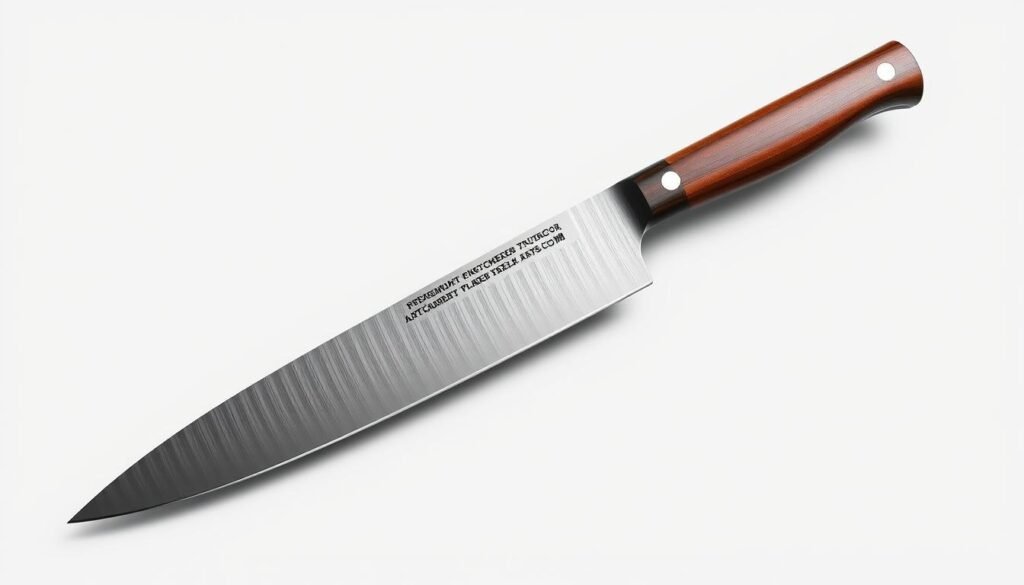
Blade Materials and Construction
The blade is the heart of a chef’s knife. Its material and build affect how well it works. Each material has its own strengths.
Carbon Steel vs. Stainless Steel
Carbon steel blades are sharp and keep their edge well. But, they need more care than stainless steel. Stainless steel blades resist rust but may not stay sharp as long. For more info, check out anatomy of a knife.
Damascus and Pattern-Welded Options
Damascus and pattern-welded knives are known for their beauty and sharpness. They’re made by layering steel, making them strong and pretty.
Handle Design and Ergonomics
The handle is as important as the blade. It affects how comfortable and in control you feel. Ergonomic handles fit well in your hand, helping you cook longer without getting tired.
- Handles can be made of wood, plastic, or metal. Each has its own benefits.
- A good handle should stay firm in your hand, even when it’s wet.
Balance and Weight Distribution
The balance and weight of a knife matter a lot. A balanced knife feels right in your hand. It lets you move smoothly and precisely.
Think about what weight and balance you like. Some chefs like heavy knives for their power. Others prefer lighter ones for their quickness.
Types of Chef’s Knives for Different Cooking Styles
Different cooking styles need specific knives. Each knife is made for a special task. Whether you’re slicing or chopping, there’s a knife for you.
Western-Style Chef’s Knives
Western-style knives have curved blades. They help with chopping and mincing. Made from high-carbon stainless steel, they last long and don’t rust.
Their handles are designed for comfort. This makes them great for long cooking sessions.
Japanese Santoku and Gyuto Knives
Japanese knives, like Santoku and Gyuto, are known for their sharpness. Santoku knives have straight edges for push-cutting. Gyuto knives mix Western and Japanese styles, making them versatile.
These knives are made from top-quality steel. They stay sharp for a long time.
Hybrid Designs and Specialized Variations
Hybrid knives combine different styles. They are great for many cooking tasks. Some knives have special features, like granton edges or serrations.
Cooks can pick from many materials and designs. This helps find the perfect knife for their needs.
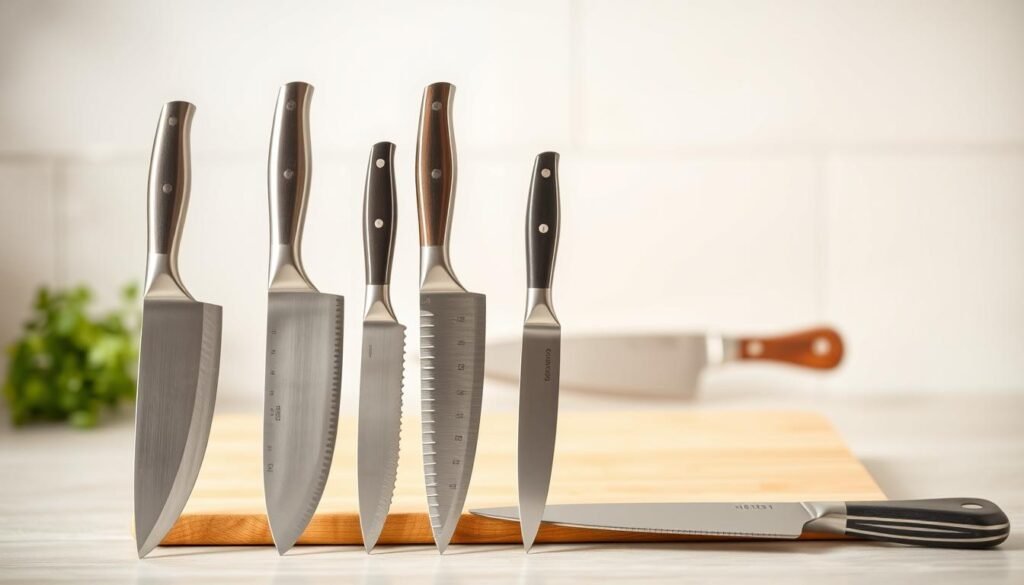
Choosing the right chef’s knife is key. It matters whether you cook at home or professionally. The right knife makes cooking better.
Exploring the different knives can help. You’ll find the best tool for your cooking.
How to Select the Perfect Chef’s Knife for Your Kitchen
Finding the right chef’s knife is about balancing cost, comfort, and quality. When looking for a good kitchen knife, many factors come into play. A chef’s knife is key to a great cooking experience.
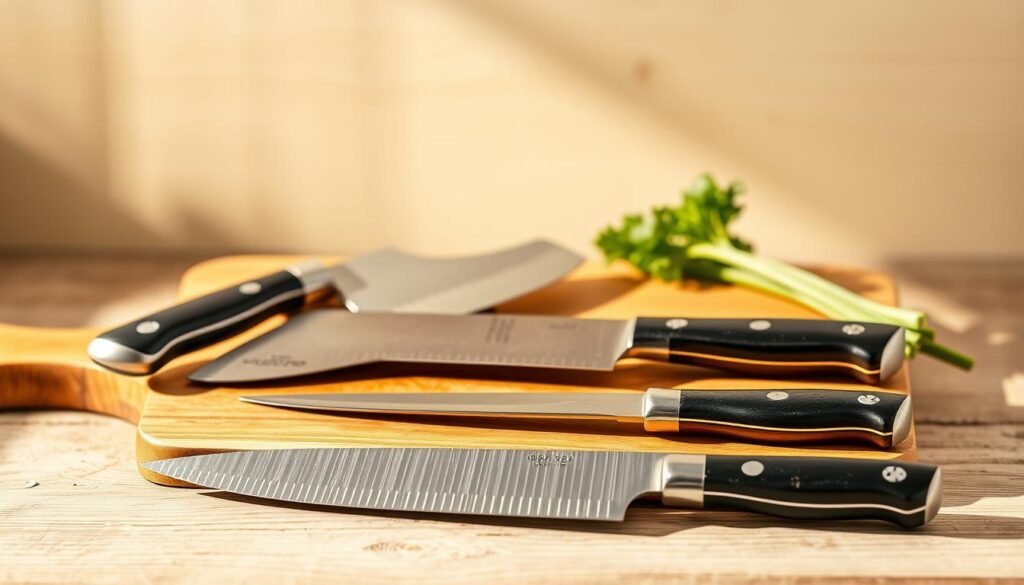
Determining Your Budget Range
First, decide how much you want to spend. Chef’s knives vary greatly in price, from very affordable to very expensive.
Entry-Level Options ($30-$80)
If you’re new to cooking or on a budget, start with entry-level knives. Brands like Victorinox and Zwilling J.A. Henckels have good options in this range.
Mid-Range Choices ($80-$150)
Mid-range knives are a good middle ground. They offer better materials and workmanship, perfect for home cooks.
Professional-Grade Investments ($150+)
For serious cooks and pros, high-end knives are the best. They last longer and perform better. Brands like Shun and Wüsthof are top choices.
Assessing Comfort and Hand Feel
A knife that feels right in your hand is key. Hold the knife, check its balance, and make sure the handle fits well.
Evaluating Blade Quality and Edge Retention
The blade’s material and build are very important. High-carbon stainless steel is popular for its strength and resistance to rust.
Top Chef Knife Brands Worth Considering
- Wüsthof: Known for their classic designs and high-quality materials.
- Shun: Offers premium knives with exceptional sharpness and craftsmanship.
- Victorinox: Provides high-quality, affordable options with a focus on durability.
Think about your budget, comfort, and the knife’s quality to find the perfect chef’s knife for your kitchen.
Maintaining Sharpness and Reliability: Care Techniques
Keeping a high quality chef knife sharp is key. A sharp knife works better and keeps you safe in the kitchen. It lowers the chance of accidents from dull blades.
Sharpening Methods and Frequency
Sharpening your chef’s knife is very important. You can use whetstones or electric sharpeners. Whetstones let you control the sharpening angle well. Electric sharpeners are fast and easy to use.
Whetstones vs. Electric Sharpeners
Whetstones need skill but let you sharpen just right. Electric sharpeners are easy and quick but less customizable.
Honing vs. Sharpening: Understanding the Difference
Honing keeps the blade sharp between sharpening times. Sharpening makes a new edge by removing metal. Honing often means you sharpen less often.
Cleaning and Storage Best Practices
Wash your chef’s knife right after use. Store it dry or on a magnetic strip. This keeps it safe and clean.
Common Mistakes That Damage Knife Quality
Don’t put your chef’s knife in the dishwasher. The heat and cleaners can harm it. Also, don’t store knives loose in a drawer. They can get damaged from hitting each other.
By taking care of your sharp chef knife, it will stay a reliable kitchen tool. This makes cooking better and can even make your knife last longer, as shown in EFNEP classes.
Conclusion: Investing in Your Culinary Future
A good Chef’s Knife is more than just a tool for your kitchen. It’s an investment in your cooking journey. Choosing the best Chef’s Knife means better cooking skills and easier meal prep.
Buying a top-notch Chef’s Knife brings many benefits to your kitchen. It makes cooking faster and safer. The right knife adds versatility, comfort, and reliability to your cooking.
When picking a Chef’s Knife, think about the blade material, handle design, and balance. This helps you find a knife that fits your cooking style. It will improve your cooking skills.
FAQ
What is the ideal length for a chef’s knife?
What are the benefits of using a high-carbon stainless steel chef’s knife?
How often should I sharpen my chef’s knife?
What is the difference between a Western-style chef’s knife and a Japanese Santoku knife?
Can I use a chef’s knife for tasks other than chopping and slicing?
How do I store my chef’s knife to maintain its quality?
What are some top-rated chef knife brands worth considering?
How do I determine the right budget for a chef’s knife?

Focused on simplicity and flavor, Ryan helps readers create quick vegan meals and snacks without the overwhelm. Whether you’re new to vegan cooking or just want to keep it simple, Ryan’s tips, guides, and no-fuss approach make plant-based eating accessible and enjoyable for everyone.
Subscribe to Our Newsletter
